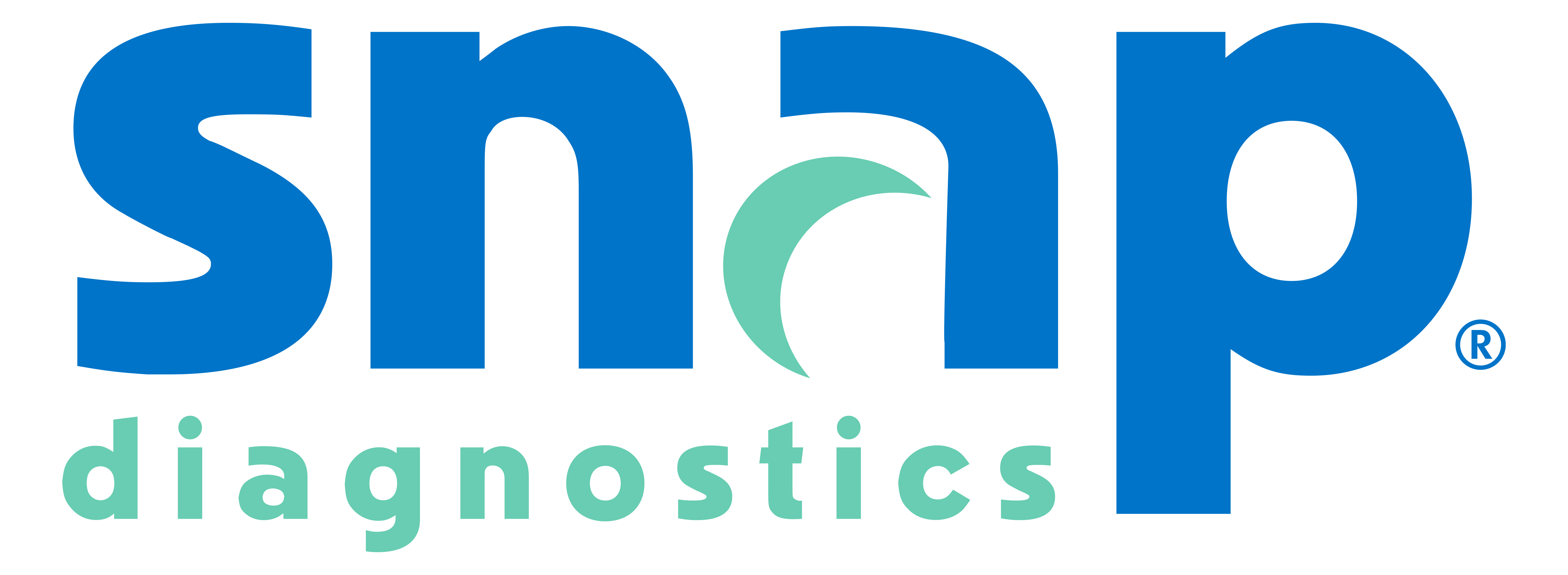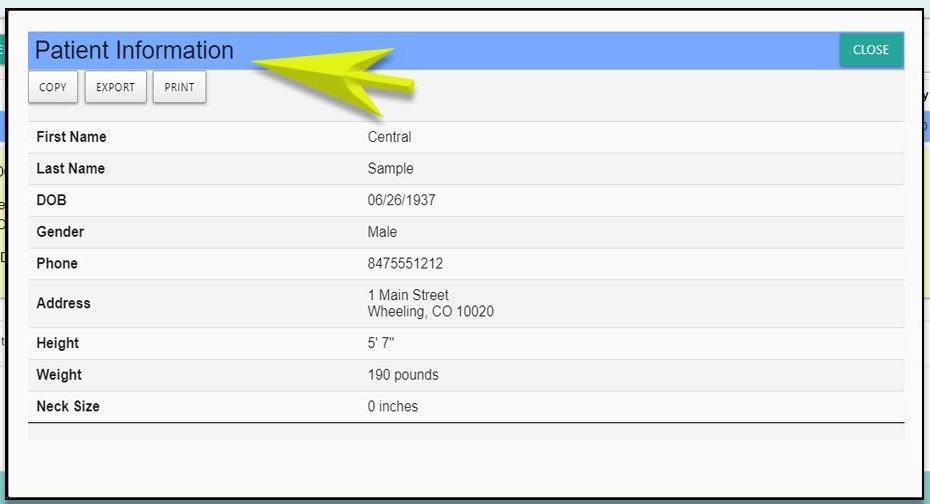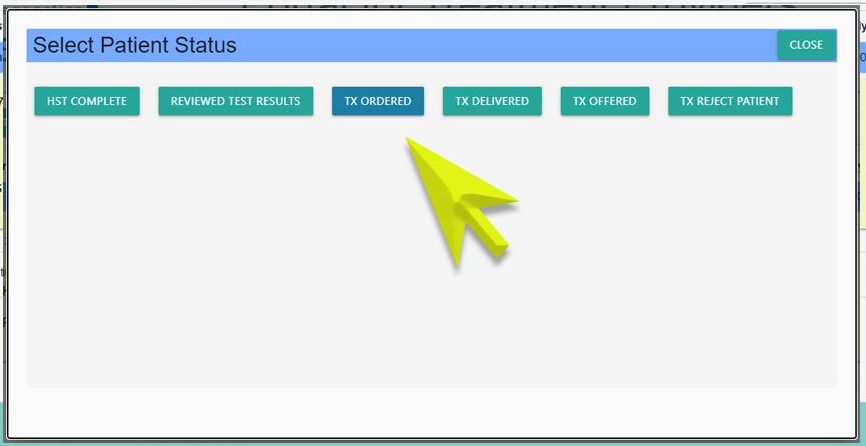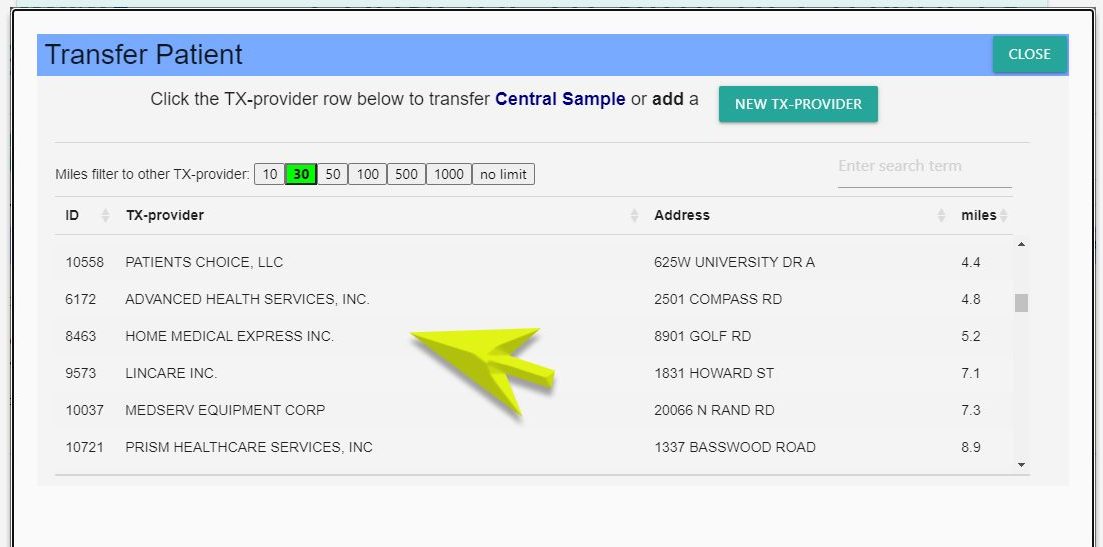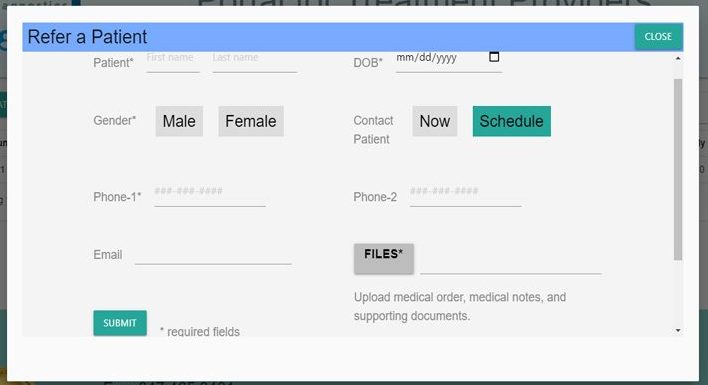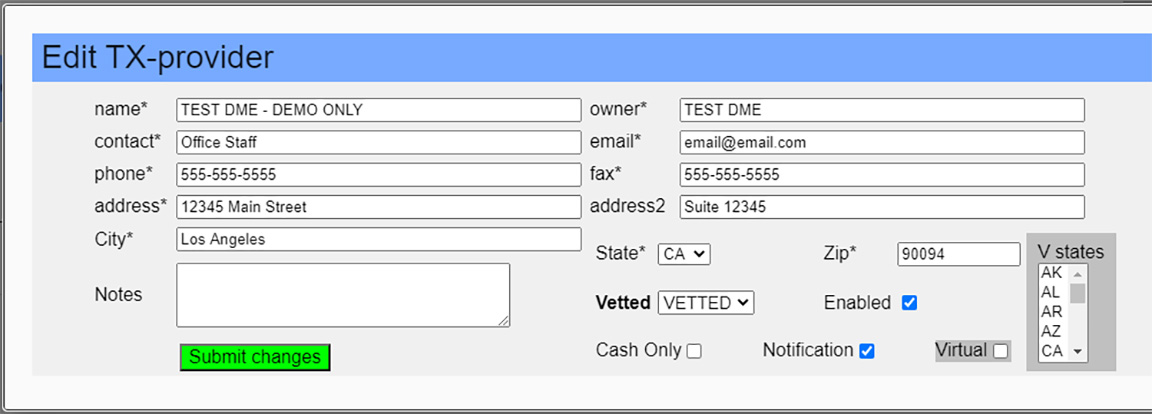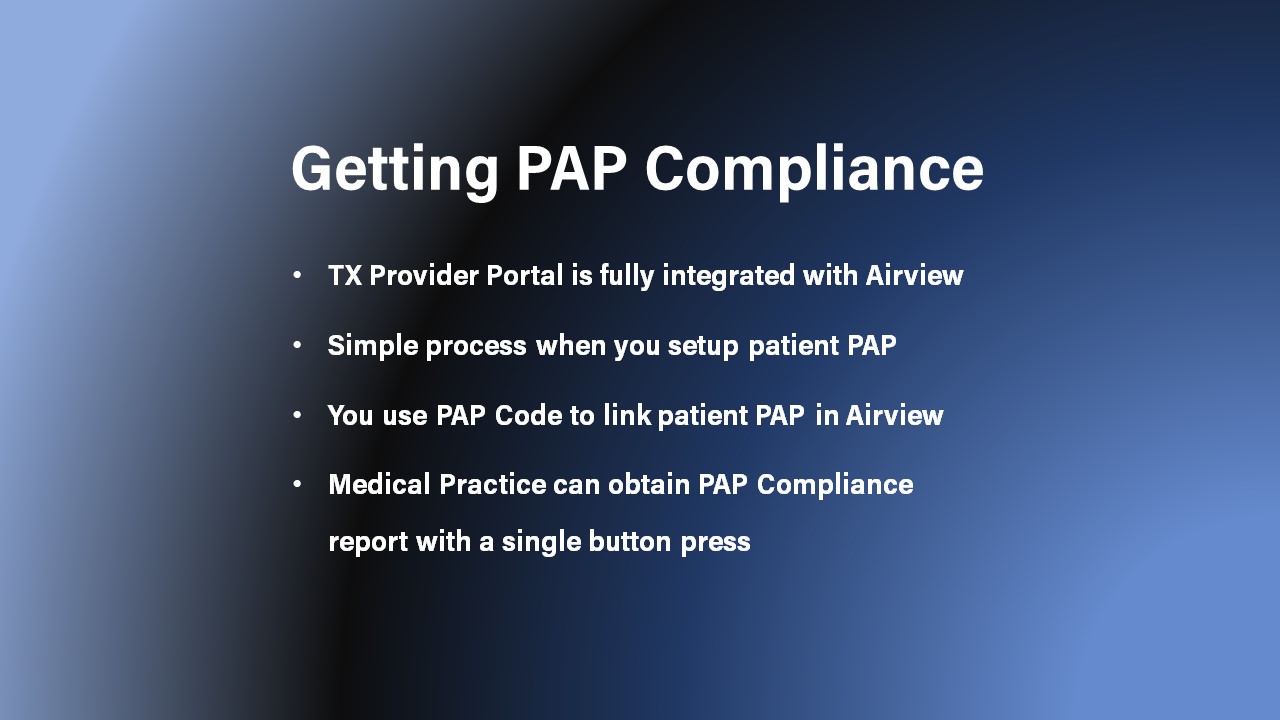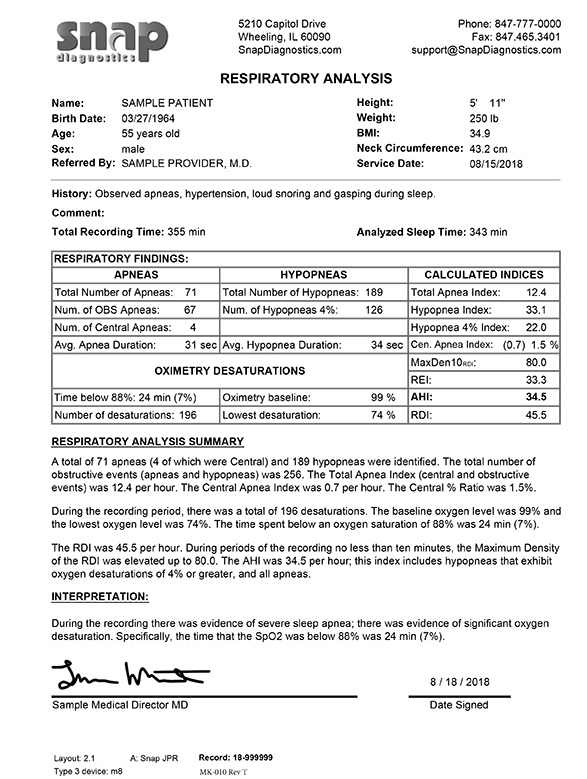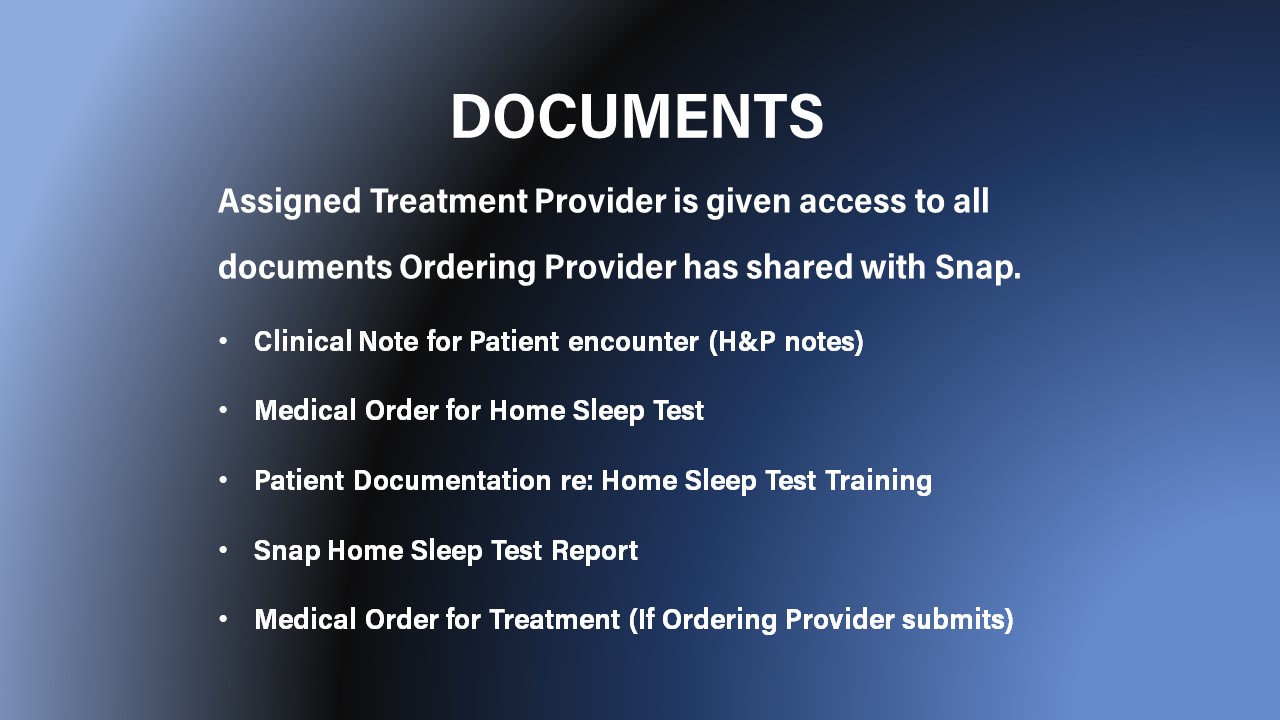Snap Validation Studies | Studies Using Snap | Clinical Practice Guidelines
Studies Using Snap
Obstructive Sleep Apnea (OSA)
A comparison of polysomnography and a portable home sleep study in the diagnosis of obstructive sleep apnea (OSA) syndrome
Su S, Baroody FM, Kohrman M, Suskind D. Otolaryngol Head Neck Surg. 2004 Dec; 131 (6): 844-850
In a study conducted by the University of Chicago Sleep Disorder Clinic, 60 patients underwent a Snap test and traditional polysomnography (PSG) on the same night. The authors concluded that the Snap home sleep study has good sensitivity, specificity, positive and negative predictive values, and “is an excellent tool for the diagnosis of OSA.”
Validations of a portable home sleep study with twelve-lead polysomnography: Comparisons and insights into a variable gold standard
Michaelson PG, Allan P, Chaney, J, Mair EA. Ann Otol Rhinol Laryngol. 2006 Nov; 115 (11): 802-809
In a study conducted by the Sleep Center at Wilford Hall United States Air Force Medical Center, 59 patients concurrently underwent a Snap test and twelve-lead polysomnography (PSG). The authors concluded that the correlation between the Snap home sleep study and PSG demonstrates that the Snap Test is “a suitable alternative to traditional PSG.” The authors further noted that the home test reduces test cost, decreases patient wait times, increases convenience, and is statistically proven to be accurate.
Night-to-night fluctuations in sleep apnea severity: diagnostic and treatment implications
Dzierzewski JM, Dautovich ND, Rybarczyk B, Taylor SA. J Clin Sleep Med. 2020 Apr; 16 (4): 539-544
Researchers at Virginia Commonwealth University evaluated the amount of nightly fluctuation in sleep apnea severity across two nights of home sleep apnea testing to determine whether it may carry diagnostic and treatment implications. The retrospective cohort study examined clinical data from 47,423 adults who underwent two nights of Snap home sleep apnea testing (HSAT).
Results revealed that more than a third of the individuals had clinically meaningful fluctuations in sleep apnea severity across multiple sleep apnea tests. Based on their findings, the authors suggested that “the addition of a second night of sleep testing to routine clinical procedures may have the potential to increase diagnostic accuracy and reduce inappropriate treatment recommendations.” The authors explained, “Given the relative ease and low cost of HSAT, coupled with the high individual and societal costs of a missed sleep apnea diagnosis and readily available treatment options, it is recommended that more than one night of HSAT be used to diagnose and inform treatment recommendations for patients with suspected OSA to minimize missed diagnosis—especially for patients whose initial HSAT is scored as nondiagnostic and for patients whose initial HSAT is within 5 AHI points of important treatment cut points.”
Snoring and Acoustical Analysis
Acoustical analysis of snoring: Can the probability of success be predicted?
Brietzke SE, Mair EA. Otolaryngol Head Neck Surg. 2006 Sep; 135 (3): 417-420
Palatal flutter snoring is the most common form of snoring, however other types of snoring exist. A study conducted by Walter Reed Army Medical Center investigated whether using Snap acoustical analysis to identify palatal snoring prior to performing palatal stiffening procedures could inform treatment success. Fifty-three patients presenting with snoring were evaluated with a Snap test and the proportion and magnitude of palatal flutter were quantified. Patients then underwent a palatal stiffening procedure and subjective success/failure was assessed. The authors concluded that “identifying patients with predominant palatal flutter snoring significantly increases the probability of subjective treatment success.”
Acoustical analysis of pediatric snoring: What can we learn?
Brietzke SE, Mair EA. Otolaryngol Head Neck Surg. 2007 Apr; 136 (4): 644-648
Researchers at Walter Reed Army Medical Center evaluated a database of 456 pediatric patients who underwent snoring acoustical analysis with a Snap test for associations between snoring measurements, demographics, and obstructive sleep apnea/hypopnea syndrome (OSAHS) severity. The authors concluded that “pediatric snoring is objectively related to OSAHS severity.” Specifically, “increasing snoring index and loudness are associated with increased severity of OSAHS. In the absence of OSAHS, increasing snoring is associated with oxygen desaturations.”
An anatomically based analysis of objectively measured pediatric snoring: A pilot study
Brietzke SE, Pusz MD. Otolaryngol Head Neck Surg. 2015 Mar; 152 (3): 561-566
This prospective cohort study at Walter Reed National Military Medical Center assessed pediatric habitual snoring in attempt to correlate the objective components of pediatric snoring to specific upper airway anatomy. Twenty-two pediatric patients with a chief complaint of snoring and probable obstructive sleep apnea underwent a Snap test prior to and post-surgical treatment. The authors observed that unlike typical adult snoring, only a minority of pediatric snoring was from palatal flutter and concluded that “pediatric snoring has different acoustical characteristics than adult snoring.” The authors further concluded that pediatric snoring is associated with BMI, turbinate size, and palatal obstruction, and may be significantly reduced with surgical treatment.
Epidemiologic Studies
An epidemiologic study of snoring and all-cause mortality
Rich J, Raviv A, Raviv N, Brietzke SE. Otolaryngol Head Neck Surg. 2011 Aug; 145 (2): 341-346
Snoring is a common problem that is often associated with obstructive sleep apnea (OSA). However, it is suggested that snoring may itself be harmful. A study conducted by Walter Reed National Military Medical Center explored a database of over 77,000 patients who underwent Snap testing to determine associations between snoring (without OSA) and all-cause mortality. The authors concluded that in patients without OSA and with a BMI less than 30, increasing snoring is associated with a significant increase in all-cause mortality.
All-cause mortality and obstructive sleep apnea revisited
Rich J, Raviv A, Raviv N, Brietzke SE. Otolaryngol Head Neck Surg. 2012 Sep; 147 (3): 583-587
In a study conducted by Walter Reed National Military Medical Center, a database of over 77,000 patients who underwent Snap sleep testing was explored for associations between obstructive sleep apnea and all-cause mortality. The authors concluded that increasing apnea severity is independently associated with modestly increased all-cause mortality in patients younger than 50 years.
Therapeutics
Evaluation of criteria for uvulopalatoplasty (UPP) patient selection using acoustic analysis of oronasal respiration (SNAP testing)
Weingarten CZ, Raviv G. J Otolaryngol. 1995 Dec; 24 (6): 352-357
This study was designed to evaluate the acoustic parameters of sleeping oronasal respiration as determined by the Snap system, to identify those that might aid in identifying appropriate candidates for uvulopalatoplasty (UPP). Predictive correlation with relief of snoring was noted when the relative loudness of velum-like snoring was greater than 12 dB and the snoring distribution was dominated by low-frequency (velum-like) snoring (> 85%). Findings showed that objective and more accurate UPP candidate selection may be possible using Snap testing.
Injection snoreplasty: Extended follow-up and new objective data
Otolaryngol Head Neck Surg. 2003 May; 128 (5): 605-15
In a series of studies conducted by Walter Reed Army Medical Center, researchers evaluated the efficacy of a simple palatal stiffening procedure to reduce snoring. Perioperative and postoperative analyses were completed using the Snap home sleep test. In this extended follow-up, the authors investigated the success and snoring relapse rates of patients treated with injection snoreplasty. The authors found that, “Success and snoring relapse rates of injection snoreplasty are similar to those for other current treatments,” while being effective, safe and inexpensive. The authors further evaluated whether the presence of palatal snoring prior to treatment, as identified by Snap snoring analysis, informed treatment success. They concluded that “preprocedure snoring analysis appears to predict patient response to stiffening treatments.”
Related Publications:
Injection snoreplasty: How to treat snoring without all the pain and expense
Injection snoreplasty: Investigation of alternative sclerotherapy agents
Does an oral appliance reduce palatal flutter and tongue base snoring?
Stouder S, Jones L, Brietzke S, Mair EA. Otolaryngol Head Neck Surg. 2007; 136 (5): 827‐831
A study conducted at Wilford Hall Medical Center evaluated whether an oral appliance designed to advance the mandible might affect palatal snoring as well as tongue base obstruction. Baseline and post-treatment analyses were completed using the Snap home sleep test. The authors found statistically significant improvements in several snoring parameters. They concluded, “The results of this study demonstrate that an oral appliance designed to advance the mandible and improve snoring and sleep apnea symptoms does exert an effect on palatal snoring as determined by the SNAP home sleep test.” The authors suggested further study into the mechanisms of oral appliances and the relationships within the pharyngeal airway in obstructive sleep apnea and snoring patients.
